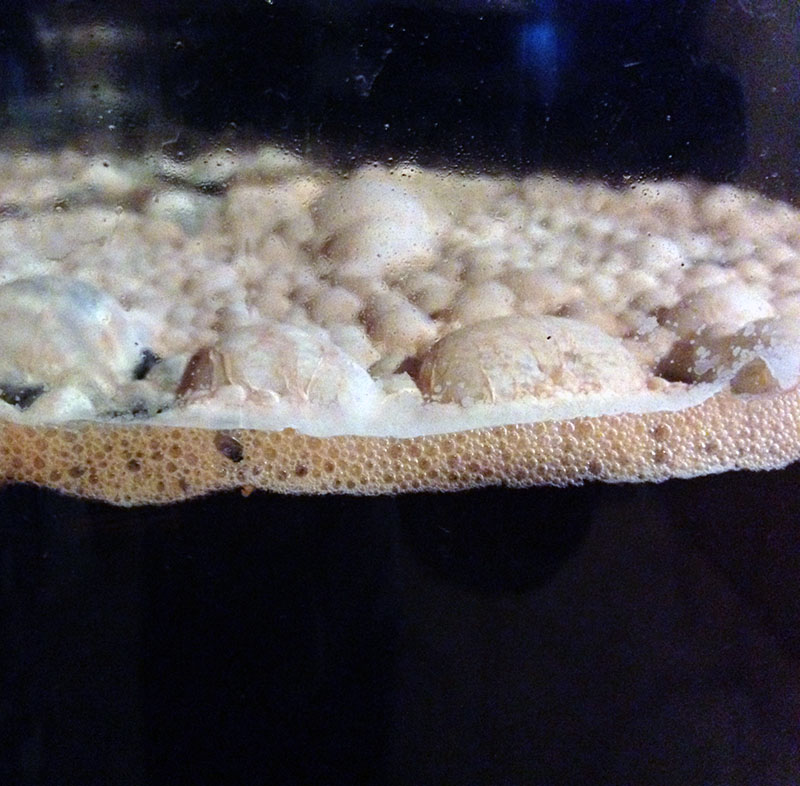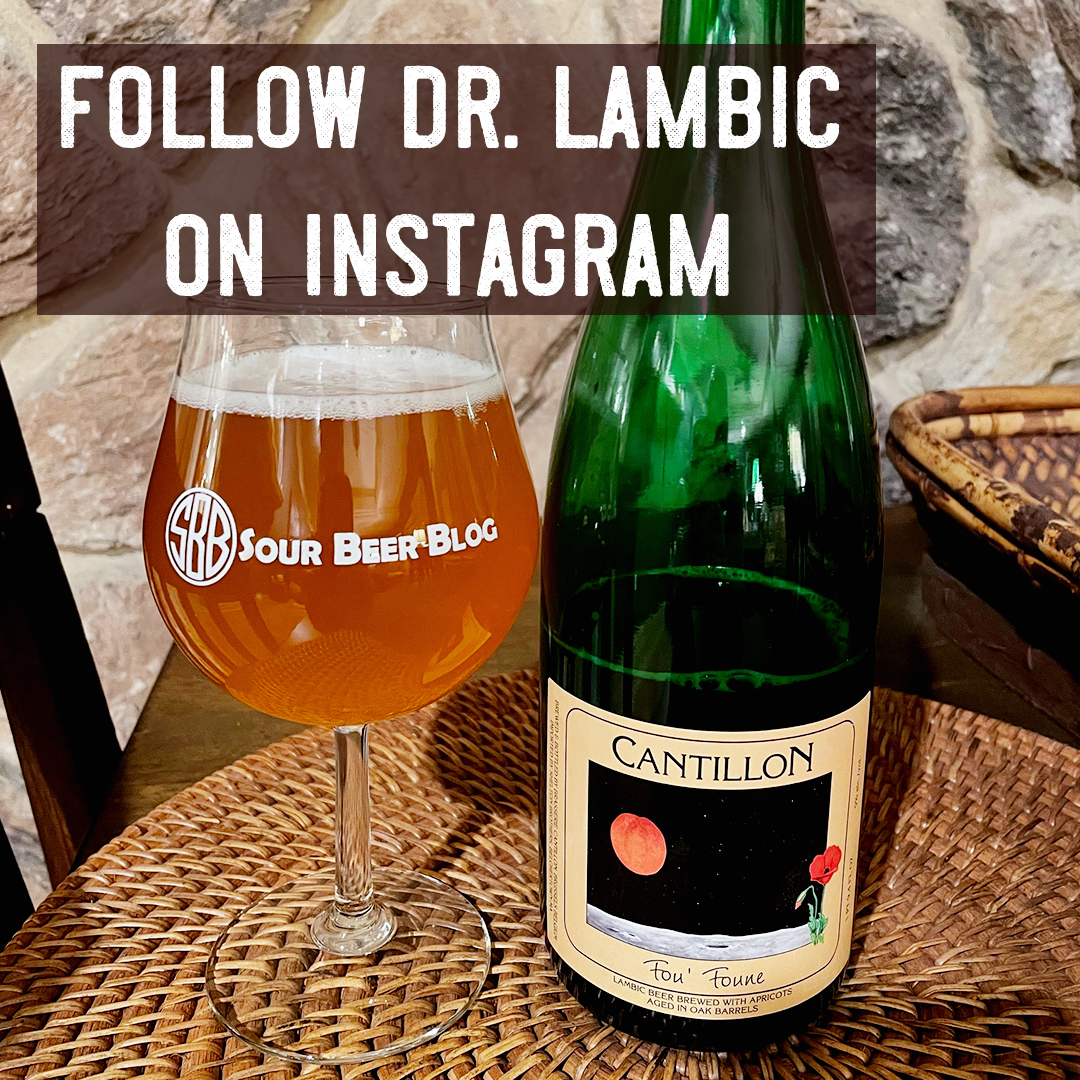Hello Sour Beer Brewers!
This installment of Ask Dr. Lambic tackles the topic of off-flavor development in sour brewing and whether beers with such flavors can be used as blending stock. I would like to thank Dave from Fort Collins, CO for sending his question in and allowing me to share it with the readers of this site!
“Hey Matt,
I’m curious if you have ever had a Lambic go to vinegar / acetic acid on you and had success with blending that out? I have 3 gallons of my first Lambic on cherries and cherry wood and I transferred into a plastic bucket to get a little more sour character which I now know was a mistake. Before I transferred it actually tasted like a really great base lambic so I thought there may be hope… Cheers!”
– Dave from Fort Collins, CO
Personally I’ve not had much luck with blending out vinegar flavors, especially if they are potent, in a gueuze or fruit lambic. Typically there are 3 off flavors in sour brewing that never age away and are so potent that they are difficult to blend with. These 3 general groupings of off-flavors are:
- (Strong) Vinegar
- Acetone / Ethyl Acetate (nail polish remover)
- Abrasively Phenolic Smoke / Burnt Plastic / Bandaid flavors.
If the vinegar is mild it could make a nice blend into a Flanders Red if the Flanders develops a strong and pleasant lactic acid character without any acetic notes. Sadly, it’s probably a loss though. Personally, rather than trying to brew a beer that could accommodate vinegar, I would prefer to just dump it and spend the energy brewing new batches to sour.
I think the idea that a lambic or other sour beer won’t sour properly without a little oxygen is a misconception from homebrew lore. In almost all cases, the bacteria that actually produce lactic acid (primarily Lactobacillus and Pediococcus) will happily do so in the complete absence of oxygen. Also while a little oxygen does encourage Brettanomyces to form a pellicle, the formation of a pellicle doesn’t seem to be closely related to developing any of the classic Brettanomyces flavors such as tropical fruit, sourdough, blue cheese, farmyard, leather, or mousyness. I’ve done several mixed fermentations in glass carboys that were filled up into the neck to reduce oxygen exposure which never formed a complete pellicle but still were packed with the leather and barnyard funk from Brettanomyces lambicus.
It sucks to have a batch of sour beer develop undesirable characteristics whether its your first time brewing sours or your hundredth. Luckily in sour brewing there are a vast number of funky flavors and aromas that will transform over time into really pleasant characteristics that we enjoy in the wide range of well-made commercial sour beers out there. However, the flavors in the list I produced above are pretty much the end of the line for a batch of sour beer as these flavors do not diminish over time and tend to be so potent that they will linger into the product of any blend in which they are used. Luckily, in the homebrewing world it is relatively easy to avoid these three off flavors with some simple practices:
1. Acetic Acid (Vinegar) can only be produced by Brettanomyces or Acetobacter in the presence of oxygen. Avoid any extra exposure to oxygen when possible. As homebrewers, our batches are generally small and therefore have a much higher surface to volume ratio than practically any batch made by a craft brewer. This higher ratio means that our beers will be especially prone to absorbing oxygen. If aging in glass, keep the carboys extra full to reduce this surface area. When transferring beer, do so only after purging the vessel you are transferring into with a layer of carbon dioxide. Limit the time a beer ferments or ages in plastic buckets. If using barrels smaller than a standard (50-60 gallon) wine barrel, taste the beer at least monthly to ensure that vinegar levels do not begin creeping up. Finally, when using barrels of any size, ensure that you have stock beer available to keep the barrel filled up, any extra head-space in the barrel will lead to over-oxidation.
2. Acetone and Ethyl Acetate both taste like nail polish remover when their concentrations are too high. In certain situations, Brettanomyces will metabolize acetic acid to produce ethyl acetate. The fix for this is therefore simple, avoid allowing vinegar to be produced in your beer and you will also avoid this potential source of nail polish flavor. Acetone on the other hand tends to be produced by an overactive fermentation by either Saccharomyces or Brettanomyces in which the yeast is too hot. To avoid acetone, keep your fermentation’s temperature controlled and in general under 75º F.
3. Abrasive Phenolic, Smoke, Burnt Rubber, & Bandaid flavors are all the product of wild yeast. When making sour beers these flavors are easy to avoid if pitching mixtures of pure strain cultures or blends produced by yeast labs. Ensure that you are pitching enough yeast to do the job properly (check out Mr. Malty’s Pitching Rate Calculator) and wild yeast will never have a chance to produce these flavors. If you are using a single strain of Lactobacillus to sour your wort before the addition of yeast strains then careful attention to sanitation is a must to avoid potential contamination with wild yeast. Lastly, if you are using spontaneous fermentation techniques then some batches will inevitably develop these flavors. This is simply the cost of doing business. Learn how to identify these flavors by taste so that when they develop you can cull those batches from your program.
Blending is the most powerful tool in the sour brewer’s arsenal but even it has its limitations. Don’t be afraid to dump bad batches. One bad batch blended into 10 awesome ones will yield a mediocre sour beer. 5 good batches can be blended together to produce something exceptional!
Hopefully these guidelines and tips have been helpful to the sour brewers who visit the site. I want to thank Dave again for submitting his question and I want to encourage any others who have questions to do the same.
Cheers and Happy Brewing!
Matt
2016 Update: For a more accurate and detailed look at the off-flavors that can or cannot be used in blending, check out our new article on Blending Sour Beers.






